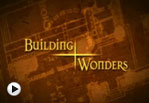Investigating Census Returns
Useful Sources of Census Returns
- http://www.nationalarchives.gov.uk/census/
- http://www.scotlandspeople.gov.uk/
- http://census.nationalarchives.ie/
- http://www.ons.gov.uk/census/
Bristol Central Library, College Green, Bristol
1881 Census and national index (1999)
Description: A set of CDs containing the 1881 British Census and its national index. Containing data covering England, Scotland, Wales, Channel Islands, Isle of Man, and the Royal Navy.
Where: Reference Library, Central Library.
Library access: CD-ROM resource. Please ask staff to load discs for you.
1891 Census (Index for Avon: Volumes 1 to 3)
Description: Surname index for Bristol, Bath and North Avon.
Where: Reference Library, Central Library.
Library access: CD-ROM resource. Please ask staff to load discs for you.
Note: Census returns are subject to copyright and we cannot reproduce them on this site however you will be able to access them via the links given above.
Support materials:
- Census returns
- Images
- Oral history
- Historical Ordnance Survey (OS) maps contemporary with the date of the Census Return (Alan Godfrey Maps produce large scale plans of OS maps for towns throughout the UK and Ireland)
- Contemporary OS map
Questions to ask
- What is a census?
- What kinds of information does a census contain?
- Number of people
- The head of the house
- Number of children
- All their ages
- All their names
- Where they were born
- Their occupations
- Their relationship to each other
- Their role in the household
- How does population information from a census help with a study of the Floating Harbour area?
- Size of the population
- Were most of the people living near the Floating Harbour born locally or did they move there from elsewhere
- Population diversity and how this has changed
- The kind of work done by most people who lived in the area
- Whether the people living here mainly poor or wealthy? Why was this?
Discuss the importance of a census as part of a wider investigation by setting it in the context of other sources of historical evidence e.g. books, maps, images, film, the built environment and artefacts.
Use the census information to creating an activity that compares different households:
- A middle class and working class household in the Floating Harbour area
- Compare two working class households living near docks in different parts of the UK at the same time
- Compare two working class households living in different areas of Bristol at the same time.
- Other similar variations on this theme
If possible use the census information to research in depth a specific individual connected with the Floating Harbour and the work of the City Docks thus building up a history of their life: name, nickname, marital status, family details, age, job, address. This would involve using additional documentation and images. It also provides an opportunity for pupils to use their creativity to explain and fill in the gaps and promotes a wider discussion of the usefulness of historical resources.






